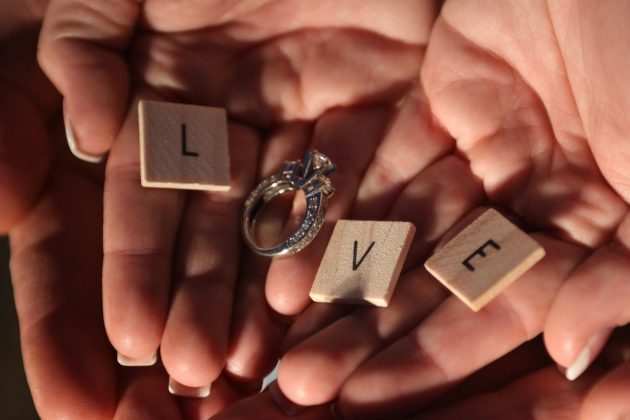The engagement ring you choose is obviously extremely important. Therefore, you should know a bit about what kinds of styles and settings are available out there before you make your choice. Once you know what kind of style you want, you’ll be able to understand the specific diamond or cut of diamond you need to go with it.
There are many different styles of engagement rings and this can get quite overwhelming if you’re new to the game. However, we will present you with some classic ring styles that will leave you feeling sure of your ultimate choice. You will definitely find a ring that suits you or your future spouse’s personality.
The Prong Setting
You may have heard of prongs before and wondered why people still use such an outdated word. Well, this term is still relevant in the world of diamond jewelry. A prong is a tiny metal setting that holds a diamond tightly in place. It has little claws that extend around the stone, locking it into position. A prong can be flat, pointed or even V-shaped, depending on the kind of diamond it is holding.
Prong settings usually feature four to six prongs. The former one shows off the shiny diamond whereas the latter is a more secure choice for bigger stones. The prong setting uses minimum metal, which means the diamond can sparkle in the light, thus making it aesthetically pleasing.
The prong is most commonly used to hold a single solitaire. This has and will always be one of the most classic and timeless styles for diamond engagement rings.
Bezel Setting
The Bezel setting comes second to the prong as the most popular diamond ring setting. It has a more modern and new-age look than the former. In this setting, the diamond isn’t held in place by prongs. Rather, it is completely encircled by a thin band. This rim is always custom made to fit the stone and it holds this in place tightly.
The bezel can be full or partial depending on the choice of the wearer. In the case of a full bezel, the stone is fully surrounded by the band. On the other hand, a partial bezel leaves the sides of the stone exposed. This is a more heavy-duty setting that doesn’t snag on clothes and doesn’t have much wear and tear. If you’re in a profession where you need to wear your ring every day and work with your hands, this is the right setting for you.
Tension Setting
The Tension setting is a curious one as it makes the stone look like it’s suspended between two thin bands of metal. The band keeps the diamond securely in place and gives the engagement ring a modern look and feel.
This setting is designed using precision lasers and mapping. The jeweler carves tiny notches into the side of the band. These are expertly matched to the size of the diamond. The shank or band firmly holds the diamond in place using nothing besides tension. The diamond is truly suspended between the two arms of the band.
This look is less expensive than the two mentioned above. What’s more, this setting provides greater security and safety since a prong or bezel always sits on the side or under the diamond. This is done so the stone is anchored in place and doesn’t move.
Channel Setting
This is one you’ve probably seen everywhere but didn’t know the name of. The Channel setting encases tiny diamonds or stones in a row and sets them into the band of the ring. This creates a metal channel of shiny glittering stones! This setting is used to decorate the sides of the band or sometimes the whole band.
The Channel setting offers a snag-free wear and can even be layered. For example, you could have a band with tiny stones set under a prong with a solitaire. This setting makes it possible to have a diverse range of styles with smaller stones.
Pave Setting
The Pave setting is even more delicate than the Channel setting in that it sets tiny stones together with minimal visibility of the band. The effect looks like the ring is one continuous sparkle and nothing more.
It is a lot of intricate work as each stone is surrounded by tiny metal prongs that sit tight around it. This setting is also called the Bead Setting, referring to the size of the beads or prongs that hold the stones in place.
The style you choose depends on what kind of vibe you want. The first two designs are more vintage while the rest are more modern. This should help you decide for sure!
